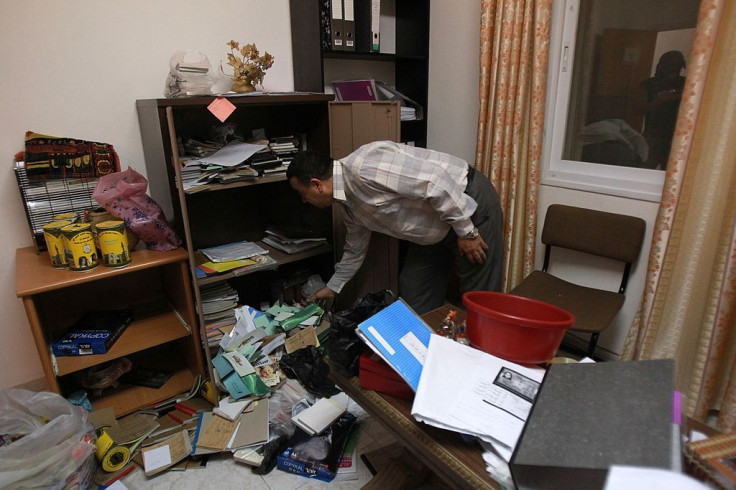
H.G. McKinnis is the author of the forthcoming novel A Justified Bitch: A Las Vegas Mystery, a twisted tale of murder, hoarding and redemption that will be in bookstores on August 8, 2017.
Her debut novel is based on fostering mental health, with a character who suffers from the pain of losing her husband and a compulsive behavior. According to the Anxiety and Depression Association of America, hoarding disorder is the persistent difficulty discarding or parting with possessions, regardless of their actual value. The behavior usually has deleterious effects like emotional, physical, social, financial, and even legal.
"We all like our stuff. We chose it, love it, and become attached. Any empty nester can tell you how difficult it is to move from a big house to a smaller one," says the novelist. "It’s a challenge to throw out mementos and get rid of things that represent milestones, success, or investment. Not every person attached to their possessions is a hoarder, not even prodigious collectors," she added.
McKinnis assures hoarding, like other addictions and mental disorders, can’t always be recognized by outward appearances. Huge piles of clutter may be a symptom, but they aren’t enough for a diagnosis without supporting evidence.
"In my early twenties, I lived with a hoarder I’ll call Mae. When I moved in, I saw she had loads of stuff, and I knew instantly she was a poor housekeeper. It wasn’t until I moved out, however, that I realized Mae wasn’t just a person who had a neatness deficit and a high tolerance for roaches," said the author. "She was a classic example of agenuine hoarder."
The novelist shared her personal experience with Latin Times, and ways to identify and how to treat the problem.
- Inability to part with worthless, useless items
A serious problem often starts out small. "As I look back on my experiences with Mae, the warning signs were all present," she said. "Her tables and chairs were stacked with worn-out books, paper bags, and old mail. She bought food in bulk 'to save money.' The food often spoiled in the refrigerator, but Mae refused to throw it out. Instead, she created a 'compost pile.' While she claimed she was improving the soil in her backyard, she was really only creating aburgeoning problem with bugs. When I noticed she had three copies of the same book, I suggested she get rid of the copy with loose, brittle, and missing pages," she continued. According to the novelist, her roommate said she was afraid the tattered version might be hurt or destroyed if she didn’t protect it. In that momento she find out that rationalizations for holding on to useless items—and even garbage—are classic signs of a disorder.
- Insatiable desire for more stuff
Mae made monthly donations to a neighborhood thrift store, usually consisting of clothing her children had outgrown and items she had recently acquired and with which she had not formed a bond. Whenever she made a donation, Mae also shopped at the thrift store for stuff she felt was “too good to stay in the store.” She usually came home with slightly less than she had left with and elated that she had “pared down.” Then she would order things from catalogs as a reward for good behavior. The result? More stuff. I now know that hoarders often have some awareness of their problematic relationship with possessions, but they can rarely make substantive changes without intervention.
- No problem getting rid of other people’s stuff
Mae couldn’t part with her own junk, but she had no trouble at all giving away McKinnis's belongings. “Oh, my friend needed it,” she said when McKinnis clock radio went missing. At the time, the author couldn’t understand this behavior. Now she know that it’s quite typical of most. Studies on the brains of have shown that ownership is a key factor when they make decisions. The disorder stems from their unhealthy relationship with their own possessions, but not those ofothers. Mae was unable to get rid of her old books and trash, but had no trouble parting with her children’s belongings—and McKinnis's stuff.
- Issues that threaten health and safety
Hoarding problems tend to get worse over time. While stacks of newspapers or boxes of possessions may at first seem innocuous, tall stacks are ahazard. Hoarders have died in fires caused by their accumulations and suffocated under toppled piles. In Mae’s case, her papers and books housed acockroach infestation. She could see that the bug problem was out of hand, but threw a fit if McKinnis mentioned getting rid of any of the clutter. She had a story about the value and use she might get out of each and every item. It is always difficult to intervene, but if health and safety are at risk, remember that hoardersare incapable of making necessary changes on their own.
Because hoarding is a behavior but not a disorder in itself, it is wise to look into possible issues that contributed to it and seek appropriate therapy. Depression leads the list of underlying causes of hoarding, but trauma, family background, dementia, and many other factors may also be responsible.
For help with hoarding itself, consider programs like Clutterers Anonymous or Buried in Treasures, twelve-step programs that are run and maintained by its members and uses the mentor approach. If the hoarder realizes that change is necessary, and makes the effort to work with the program, can develop a tolerance for bypassing unnecessary purchases. As a friend or family member, remember that understanding and compassion can go a long way to helping a hoarder improve.
© 2025 Latin Times. All rights reserved. Do not reproduce without permission.






